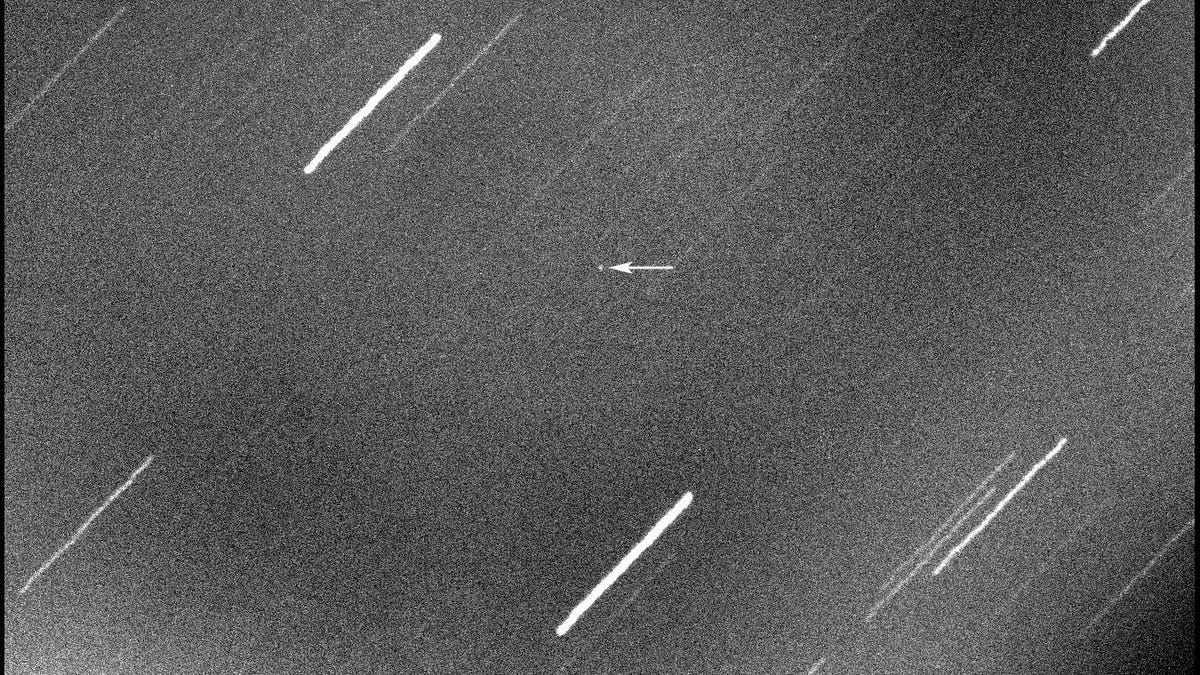See the jumbo asteroid that just flew safely past Earth
A telescope snapped a view of asteroid 2001 FO32 after it zipped by.
You can understand how a planet full of stressed-out people trying to survive a pandemic might get a little panicky about news of a very large asteroid visiting our cosmic neighborhood. But it's all OK. Asteroid 2001 FO32 passed by at a safe distance on March 21.
The Virtual Telescope Project (VTP) managed to snap an image of the space rock just a few hours after its flyby. It appears as a small dot in the picture. VTP founder Gianluca Masi described the image as "lucky" due to challenging morning twilight viewing conditions.
Asteroids of all sizes fly by Earth all the time, but occasionally NASA makes a public statement to calm fears when space-rock-related headlines get out of control.
The NASA Asteroid Watch Twitter account delivered a reassuring message earlier in the month saying 2001 FO32 would "safely zip past Earth at a distance of 1.3 million miles -- five times further away than the moon -- and poses no risk of hitting Earth."
You may have seen headlines about an #asteroid that will safely fly by Earth on March 21. While this asteroid, known as 2001 FO32, is large, it will safely zip past Earth at a distance of 1.3 million miles—five times further away than the Moon—and poses no risk of hitting Earth. pic.twitter.com/oZZG5UaFsf
— NASA Asteroid Watch (@AsteroidWatch) March 8, 2021
According to JPL data, the asteroid was first discovered in 2001, so we've known about its existence for quite some time.
One of the reasons the asteroid attracted extra attention is its size. It's a big 'un, and initial information suggested it could clock in with an estimated diameter of up to about a mile (1.7 kilometers). The latest data has scaled that down and it may actually be closer to 1,800 feet (550 meters) in diameter. That's still plenty hefty.
NASA and other space organizations do an admirable job of tracking asteroids that come to Earth's vicinity. If you're desperate to get concerned about an asteroid, then Apophis -- which will make a close pass in 2029 -- is a better candidate, but still nothing to lose sleep over.
Instead, you could spend your energy getting excited about NASA's upcoming DART mission, which will test out a method for altering the course of dangerous asteroids.
Follow CNET's 2021 Space Calendar to stay up to date with all the latest space news this year. You can even add it to your own Google Calendar.


